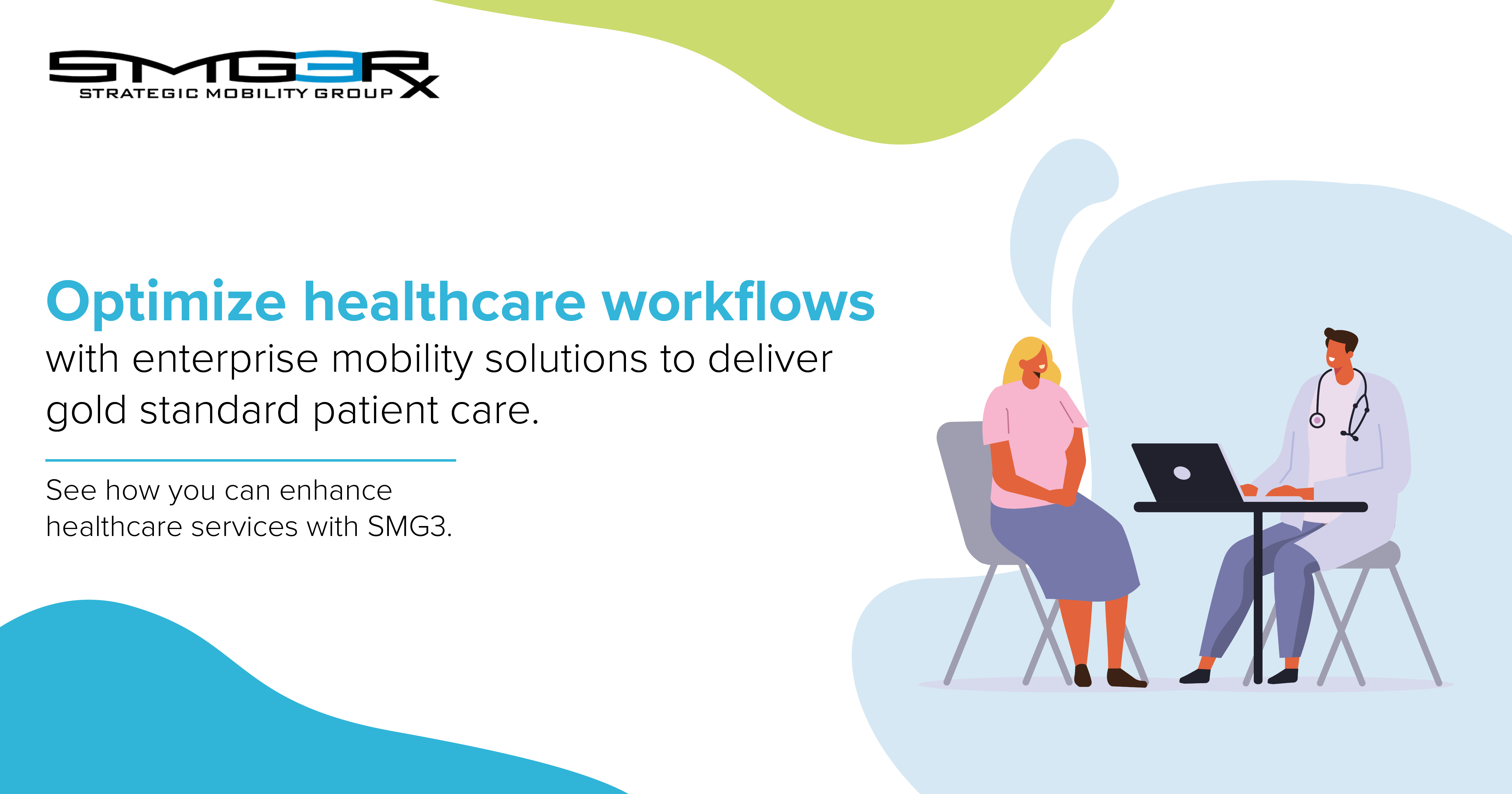According to a recent clinical healthcare study, nine out of 10 clinicians will be using mobile devices as a part of their daily work routine by 2022, which will improve communication and collaboration and result in the integration of mobility technology at hospitals. Because mobile devices provide real-time access, they are critical to patient care, safety and the delivery of healthcare services. Hospitals currently allow clinicians to Bring Your Own [personal] Device (BYOD) for work-related use, while some maintain consumer brand smartphones for clinician use. However, due to the high strains associated with elevated patient care, consumer-grade devices often fail to provide the needed performance, security, and connectivity. Consequently. more hospitals are encouraged to eliminate the use of personal smartphones in the workplace altogether and choose a more secure, cost-effective and manageable enterprise mobility solution.
Consumer- vs. Enterprise-grade Smartphones
Choosing the right device for hospital staff can maximize the success of healthcare mobility deployment and will be one of the most important decisions an organization will make in the effective delivery of healthcare services. The right device will increase:
- Workplace productivity
- Task Accuracy
- Higher ROI
- Simplistic management of EHRs
- Patient safety across all departments
Because the device selection process is a critical part of an organization’s operational strategy, it’s important to understand the differences between consumer- and enterprise-class smartphones, starting with…
1. Regulatory Compliance and CybersecurityThe uptake and adoption of mobile computing and electronic health records (EHR) are critical success indicators of hospitals’ mobility deployment initiatives. Hospitals are expected to comply with patient privacy protection and data security regulations, yet every year, more than 2,100 patient deaths are connected to data breaches at hospitals.
Cybersecurity threats and the ability to minimize and contain them is a key priority for hospitals, which are responsible not only for the safety and security of staff, patients and guests, but also for the storage of highly sensitive patient data. It is more difficult and labor-intensive for hospitals to protect against cybersecurity breaches and ransomware attacks with consumer-grade smartphones, which are not designed for a healthcare-purposed environment.
In contrast, enterprise-class mobile devices are designed for large organizations and are designed to more easily enable centralized device management to help prevent serious risks.
2. Operating Systems & HardwareEnterprise-grade smartphones for healthcare use typically allow users more operating system and hardware personalization compared with those that are consumer grade. Personalization allows for customized device configuration, which can be tailored to deliver upon a hospital’s unique business needs. Without the ability to customize, each device would need to be physically evaluated for troubleshooting and problem resolution, which inevitably results in increased Total Cost of Ownership (TCO) support costs.
In addition, with an operating system that lacks the necessary security features, consumer-grade smartphones are unable to comply with Health Insurance Portability and Accountability Act of 1996 (HIPAA) and Payment Card Industry Data Security Standard (PCI) regulations, which protect sensitive patient health information and credit card data. In contrast, Android’s fortified operating system is equipped with the functionality and features necessary to meet these security requirements.
3. DesignConsumer-grade devices are designed for personal use and cannot withstand harsh environments such as warehouses, production floors or sterile environments such as hospitals where frequent product disinfection is required.
In contrast, enterprise-grade smartphones are designed specifically to meet the business needs of harsher workplace environments. In certain instances, this may require larger displays, disinfectant-ready casings, more durable builds, end-to-end warranties and speedy access to servicing or replacement parts.
4. Battery LifeSimilar to bar code scanning, battery life is a critical mobile device function in a healthcare setting. Scanning identifies patients, medications and lab specimens to prevent human errors that can result in higher costs, illnesses and deaths. Guaranteed full-shift battery power (12+ hours) allows clinicians to focus on patient treatment without risking interruptions that result from the loss of power and the need to recharge personal smartphones. When patients place their lives in clinicians’ hands, they put their lives in the hands of professionals. Unlike consumer-grade devices, enterprise-grade devices have high-performance industry-standard operability that is geared toward the professional healthcare worker’s needs.
By 2022, clinical mobility will be the gold standard in healthcare and accompanied by a rapid uptake of mobile devices such as handheld mobile computers, tablets, cordless barcode scanners and mobile printers in hospitals around the globe. Nearly all hospitals in a recent survey estimated that mobile devices will be used at the bedside by 97% of nurses and 98% of physicians by 2022.
Choosing the right device for hospital staff will maximize the success of healthcare mobility deployment and will be the single most important decision a hospital can make for its operations, staff and patients. To learn more about the benefits of enterprise-grade technologies in healthcare, reach out to an SMG3 specialist.



